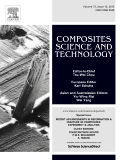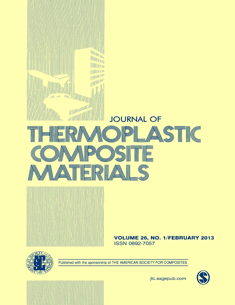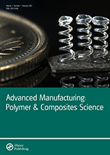
COMPOSITES SCIENCE AND TECHNOLOGY
Scope & Guideline
Exploring the Frontiers of Composite Science
Introduction
Aims and Scopes
- Material Development and Characterization:
The journal focuses on the development of new composite materials, including polymers, metals, and ceramics, with an emphasis on characterizing their mechanical, thermal, and electrical properties. - Processing Techniques:
Research on innovative processing methods, such as additive manufacturing, electrospinning, and hybrid manufacturing techniques, is a key area of focus. The journal publishes studies that explore how these techniques can enhance the performance and functionality of composite materials. - Interface Engineering:
Significant emphasis is placed on the study of interfacial properties and interactions within composite materials, particularly how these affect the overall performance and durability of composites. - Multifunctional Applications:
The journal explores the application of composite materials in various fields, including aerospace, automotive, electronics, and biomedical engineering, focusing on their multifunctional capabilities such as structural integrity, thermal management, and electromagnetic interference (EMI) shielding. - Sustainability and Recycling:
A growing focus on the sustainability of composite materials, including the development of bio-based composites, recycling methods, and life-cycle assessments, reflects the journal's commitment to environmentally friendly practices in materials science.
Trending and Emerging
- Nanocomposites and Hybrid Materials:
There is a significant rise in research focusing on nanocomposites and hybrid materials that incorporate nanoparticles or other fillers to enhance mechanical, thermal, and electrical properties, highlighting a trend towards high-performance materials. - Smart and Responsive Composites:
The development of smart composites that can respond to environmental stimuli, such as temperature, light, or moisture, is gaining traction, reflecting the increasing interest in multifunctional materials. - Data-Driven Approaches and Machine Learning:
The integration of machine learning and data-driven methodologies for predicting material behavior and optimizing composite design is becoming more prevalent, as researchers seek to leverage computational power for advancements in material science. - Sustainability and Biocomposites:
There is a growing emphasis on sustainable materials and processes, including the use of bio-based composites and recycling methods, driven by environmental concerns and the push for greener technologies. - In Situ and Real-Time Monitoring:
Emerging techniques for in situ monitoring of mechanical and thermal properties during processing and application are becoming more common, allowing for better understanding and optimization of material performance.
Declining or Waning
- Traditional Composite Manufacturing Techniques:
There has been a noticeable decline in publications focusing solely on traditional composite manufacturing methods, such as manual lay-up or conventional molding techniques, as researchers increasingly explore more advanced and automated methods. - Single-Function Composites:
The interest in composites designed for single functions, such as purely structural applications without additional features like thermal or electrical conductivity, appears to be waning. Instead, there is a trend towards multifunctional composites that serve multiple purposes. - Static Mechanical Testing:
Research focused solely on static mechanical testing methods is declining, as there is a growing emphasis on dynamic, fatigue, and environmental testing that better simulates real-world applications. - Basic Material Characterization:
Basic characterization studies that do not integrate advanced modeling or innovative analysis techniques are becoming less frequent, as the field moves towards more comprehensive and predictive approaches.
Similar Journals

JOURNAL OF THERMOPLASTIC COMPOSITE MATERIALS
Pioneering Insights in Ceramics and Composite MaterialsJOURNAL OF THERMOPLASTIC COMPOSITE MATERIALS, published by SAGE PUBLICATIONS LTD, is a cutting-edge journal dedicated to advancing the field of thermoplastic composites and their applications within ceramics and condensed matter physics. With an ISSN of 0892-7057 and an E-ISSN of 1530-7980, the journal boasts a strong academic reputation evidenced by its impressive impact factor as well as its classification in the 2023 Q2 category for both Ceramics and Composites and Condensed Matter Physics. Ranked #60 in Condensed Matter Physics and #26 in Materials Science by Scopus, the journal plays a pivotal role in disseminating innovative research findings, trends, and advancements to a global audience. Spanning research from 1988 to 2024, it serves as an essential resource for researchers, professionals, and students alike, fostering collaboration and promoting knowledge in the ever-evolving landscape of thermoplastic composite materials. Although currently not open access, the comprehensive content and critical insights provided by this journal are invaluable for those engaged in cutting-edge research and practical applications in these fields.

Advanced Manufacturing-Polymer & Composites Science
Advancing the Frontiers of Materials ScienceAdvanced Manufacturing-Polymer & Composites Science, published by Taylor & Francis Ltd, is a prominent open-access journal dedicated to the cutting-edge fields of polymer and composite materials in advanced manufacturing. With an ISSN of 2055-0340 and an E-ISSN of 2055-0359, this journal has been providing researchers, professionals, and students critical insights since its inception in 2015. The journal is characterized by its pivotal role in disseminating high-quality research that intersects with crucial areas such as Electrical and Electronic Engineering, Management of Technology and Innovation, and Polymers and Plastics, as indicated by its Q3 and Q2 rankings across these categories in 2023. In addition, it has established a significant presence in Scopus rankings, reflecting its contribution to the academic community with specific ranks in the top half of its fields. Recognizing the importance of open access, the journal fosters wider dissemination of knowledge, allowing global access to groundbreaking studies that influence both research and practical applications. Operating from the United Kingdom, Advanced Manufacturing-Polymer & Composites Science continues to pave the way for innovation and collaboration in the field, making it an essential resource for anyone involved in materials science and engineering.

Functional Composites and Structures
Elevating Material Science through Collaborative Insights.Functional Composites and Structures is a prestigious academic journal published by IOP Publishing Ltd, dedicated to advancing the field of materials science with a focus on innovative composite materials and their structural applications. Established in 2019 and running through 2024, this journal uniquely bridges several disciplines, consistently ranking in the Q2 quartile across key categories including Ceramics and Composites, Electronic, Optical and Magnetic Materials, and Mechanics of Materials. With a commendable Scopus rank that places it within the top tiers of its field, the journal is instrumental for researchers, engineers, and scholars seeking to explore the latest developments in material properties, functionality, and applications. Although access options are not specified, the open-access nature of the journal promotes wider dissemination and engagement with cutting-edge research. As the demand for smarter, more efficient materials continues to grow, Functional Composites and Structures serves as a vital resource for fostering collaboration and driving innovation in material sciences.

COMPOSITE INTERFACES
Unveiling the Future of Composite ApplicationsComposite Interfaces is a prominent journal dedicated to advancing the scientific understanding and applications of composite materials and interfaces, published by Taylor & Francis Ltd. Since its inception in 1993, this journal has become a pivotal resource for researchers and practitioners in the fields of ceramics and composites, as well as in physics and materials sciences. With a commendable Q2 ranking in 2023 across multiple categories, including Ceramics and Composites, Physics and Astronomy, and Surfaces, Coatings and Films, Composite Interfaces ensures a high standard of scholarly excellence, reflected in its robust Scopus rankings. While the journal operates under a subscription model, its influential body of work is vital for those seeking to innovate in composite material applications. By fostering scholarly communication, Composite Interfaces plays a crucial role in the progression of material science, an area of increasing relevance in technology and engineering.

Elastomers and Composites
Connecting Researchers to the World of Composite MaterialsElastomers and Composites is a leading academic journal dedicated to the advancement of knowledge in the fields of polymer science and materials engineering, specifically focusing on elastomers and composite materials. Published by RUBBER SOC KOREA, this journal serves as a vital platform for researchers and professionals to disseminate innovative research findings and insights in material properties, applications, and synthesis techniques. Although it currently does not offer open access, the journal provides rigorous peer-reviewed content that enhances the global dialogue on elastomeric materials and their composites, reflecting its commitment to high-quality scholarship. With a strong emphasis on practical relevance and theoretical advancements, Elastomers and Composites aspires to reshape industry practices and academic thought, making it an invaluable resource for students, researchers, and practitioners alike. Positioned strategically within its field, this journal fosters collaboration and dialogue among scientific communities, all while supporting the growth of cutting-edge research programs worldwide.

POLYMER INTERNATIONAL
Transforming Ideas into Polymer InnovationsPOLYMER INTERNATIONAL is a leading journal in the field of polymer science, published by Wiley, one of the most esteemed scholarly publishers. With an ISSN of 0959-8103 and an E-ISSN of 1097-0126, this journal has been a pivotal platform for researchers since its inception in 1991, now extending its coverage until 2024. The journal boasts a commendable standing in various scientific domains, achieving a Q2 quartile ranking in Materials Chemistry, Organic Chemistry, and Polymers and Plastics as of 2023. Additionally, it holds impressive Scopus ranks, including Rank #47 in Organic Chemistry and Rank #40 in Polymers and Plastics, placing it within the top percentiles of its categories. Researchers, professionals, and students alike can benefit from its rich array of articles that contribute to the understanding and advancement of polymer technology and materials science. Although not an open access journal, POLYMER INTERNATIONAL remains crucial for disseminating high-quality research that drives innovation and development within the field.

POLYMERS & POLYMER COMPOSITES
Elevating Understanding of Composite MaterialsPOLYMERS & POLYMER COMPOSITES, published by SAGE Publications Ltd, is a prestigious journal dedicated to the exploration of significant advancements in the diverse fields of polymers, composite materials, and their innovative applications. With an ISSN of 0967-3911 and E-ISSN of 1478-2391, this journal plays a crucial role in the academic community, boasting an impressive ranking in the Q2 quartile across pivotal categories such as Ceramics and Composites, Materials Chemistry, and Polymers and Plastics in 2023. Positioned in the United Kingdom, it serves as a vital resource for researchers and professionals, providing insights into current trends and future directions in material science. Despite its availability not extending to Open Access, the journal aims to promote rigorous peer-reviewed research, thus fostering knowledge and collaboration among scholars. With publication convergence from 1993 to 2024, POLYMERS & POLYMER COMPOSITES stands as a cornerstone for those pursuing advanced understanding and excellence in material innovation.

Composites Part C: Open Access
Advancing Knowledge in Composite MaterialsComposites Part C: Open Access, an esteemed journal published by Elsevier, is at the forefront of research in the fields of Ceramics and Composites, Mechanical Engineering, and Mechanics of Materials. Launched in 2020, this fully open-access journal facilitates unparalleled access to significant advancements in composite materials, ensuring that research findings are disseminated widely and freely throughout the global academic community. With an impressive Q1 ranking across multiple related categories and robust placements in Scopus rankings, specifically #78 in Mechanical Engineering and #24 in Materials Science, the journal serves as a vital platform for researchers, professionals, and students to publish their work and engage with cutting-edge studies. It aims to foster innovation and collaboration in the development and application of composite materials and their technologies, making it an indispensable resource for anyone invested in these dynamic fields.

Materiaux & Techniques
Innovating the Future of Materials with Peer-Reviewed InsightsMateriaux & Techniques, published by EDP SCIENCES S A, is a prominent journal in the field of materials science, specifically focusing on diverse and innovative techniques in material development and application. With an ISSN of 0032-6895 and an E-ISSN of 1778-3771, this French journal serves as a key resource for researchers and professionals looking to advance their knowledge and share their findings within the community. The journal holds a Q3 ranking in Materials Science (miscellaneous), indicating its role in contributing to various facets of material science research amidst a growing field. Despite operating under a traditional access model, it provides a platform for rigorous peer-reviewed studies and significant advancements in material technology. With a publication history tracing back to the late 1970s and extending through to 2024, Materiaux & Techniques continues to uphold its commitment to fostering high-quality discourse and innovation in materials science.

Journal of Industrial Textiles
Pioneering Insights into Industrial Textile ApplicationsJournal of Industrial Textiles, published by SAGE Publications Inc, is a leading academic journal that focuses on the intricate interplay between textile materials and industrial applications. With a significant impact factor and a strong reputation in the field, it caters to a diverse audience ranging from researchers and professionals to students interested in the advancement of textile engineering, chemical engineering, and materials science. The journal offers invaluable insights into innovative textile processes, sustainable practices, and the latest technological developments as it spans research contributions from 1971 to the present. Notably, it ranks in the second quartile across various categories, including Chemical Engineering and Industrial and Manufacturing Engineering, reflecting its influence and quality in the scientific community. Although it is not an open access journal, the Journal of Industrial Textiles remains a critical resource for advancing knowledge and fostering collaboration within the textile sector and related fields.